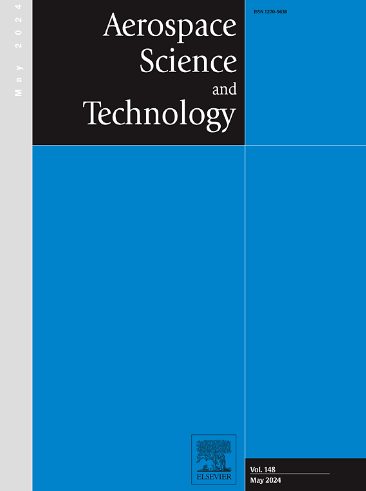利用部分张量结构正交规则的图形加速非侵入式多项式混沌展开,用于不确定性量化
IF 5
1区 工程技术
Q1 ENGINEERING, AEROSPACE
引用次数: 0
摘要
最近,有人提出了图加速非侵入式多项式混沌(NIPC)方法,用于解决不确定性量化(UQ)问题。该方法利用基于全网格整合的 NIPC 方法来解决 UQ 问题,同时采用计算图转换方法 AMTC 来加速张量网格评估。该方法在以多学科模型为特征的各种低维(三维或更小)UQ 问题上表现出显著的功效。然而,由于使用全网格正交规则时正交点数量呈指数增长,该方法通常不能很好地扩展问题维度。为了将这种方法的适用范围扩大到更广泛的 UQ 问题,本文介绍了一种新的框架,用于生成定制的、部分张量结构的正交规则,与图形加速 NIPC 方法一起使用。通过设计的正交方法生成的正交规则具有针对计算模型量身定制的张量结构。张量结构的选择以计算图分析为指导,确保正交规则在与 AMTC 方法配对时能有效利用计算图中的稀疏性。该方法已在一个 4D 和一个 6D UQ 问题上进行了测试,这两个问题都源自飞机设计方案,并具有多学科模型的特点。数值结果表明,当使用图加速 NIPC 方法时,我们的方法生成的部分张量结构正交规则在两个测试问题中都优于全网格高斯正交和设计正交方法(计算成本减少 40% 以上)。本文章由计算机程序翻译,如有差异,请以英文原文为准。
Graph-accelerated non-intrusive polynomial chaos expansion using partially tensor-structured quadrature rules for uncertainty quantification
Recently, the graph-accelerated non-intrusive polynomial chaos (NIPC) method has been proposed for solving uncertainty quantification (UQ) problems. This method leverages the full-grid integration-based NIPC method to address UQ problems while employing the computational graph transformation approach, AMTC, to accelerate the tensor-grid evaluations. This method exhibits remarkable efficacy on a broad range of low-dimensional (three dimensions or less) UQ problems featuring multidisciplinary models. However, it often does not scale well with problem dimensions due to the exponential increase in the number of quadrature points when using the full-grid quadrature rule. To expand the applicability of this method to a broader range of UQ problems, this paper introduces a new framework for generating a tailored, partially tensor-structured quadrature rule to use with the graph-accelerated NIPC method. This quadrature rule, generated through the designed quadrature approach, possesses a tensor structure that is tailored for the computational model. The selection of the tensor structure is guided by an analysis of the computational graph, ensuring that the quadrature rule effectively capitalizes on the sparsity within the computational graph when paired with the AMTC method. This method has been tested on one 4D and one 6D UQ problem, both originating from aircraft design scenarios and featuring multidisciplinary models. Numerical results show that, when using with graph-accelerated NIPC method, our approach generates a partially tensor-structured quadrature rule that outperforms the full-grid Gauss quadrature and the designed quadrature methods (more than 40% reduction in computational costs) in both of the test problems.
求助全文
通过发布文献求助,成功后即可免费获取论文全文。
去求助
来源期刊

Aerospace Science and Technology
工程技术-工程:宇航
CiteScore
10.30
自引率
28.60%
发文量
654
审稿时长
54 days
期刊介绍:
Aerospace Science and Technology publishes articles of outstanding scientific quality. Each article is reviewed by two referees. The journal welcomes papers from a wide range of countries. This journal publishes original papers, review articles and short communications related to all fields of aerospace research, fundamental and applied, potential applications of which are clearly related to:
• The design and the manufacture of aircraft, helicopters, missiles, launchers and satellites
• The control of their environment
• The study of various systems they are involved in, as supports or as targets.
Authors are invited to submit papers on new advances in the following topics to aerospace applications:
• Fluid dynamics
• Energetics and propulsion
• Materials and structures
• Flight mechanics
• Navigation, guidance and control
• Acoustics
• Optics
• Electromagnetism and radar
• Signal and image processing
• Information processing
• Data fusion
• Decision aid
• Human behaviour
• Robotics and intelligent systems
• Complex system engineering.
Etc.
 求助内容:
求助内容: 应助结果提醒方式:
应助结果提醒方式:


